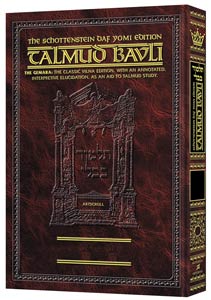 Someone recently told me that he found the Karaite Jewish approach to halakha rather nonintellectual, because Karaites only follow what the Torah says and do not search for the deeper meaning.
Someone recently told me that he found the Karaite Jewish approach to halakha rather nonintellectual, because Karaites only follow what the Torah says and do not search for the deeper meaning.
Oy! Karaites do not follow what the Torah “says;” we seek to follow what the Torah “means.” These two things are not always the same. Today, let’s look at some of my favorite non-literal Karaite interpretations.
The laws of forbidden marriages set forth in Leviticus 18 are a classic example. The Torah literally tells us that a man is not allowed to have relations with his aunt. (Leviticus 18:12.) But Karaites also forbid relations between a woman and her uncle (because we see no principled reason to differentiate the two situations). In contrast, the Rabbinic tradition considers it a big mitzvah for a man to marry his niece. [1.] While I think Karaites got this one “right,” I’ve also contemplated whether Karaites have gone too far in the use of analogy in determining the laws of forbidden marriage.
And as we read this last Shabbat, the Torah literally commands us not to kill a bull or ram and its child on the same day. Although the verse refers to male animals, Karaites (and I presume Rabbanites) forbid the killing of a female animal and its child on the same day. And as I’ve described elsewhere, the historical Karaite view (unlike the Rabbinic view) is to forbid slaughtering a pregnant animal, even though the Torah does not even mention female animals (let alone pregnant females animals) in this verse.
Of course, we are all familiar with the Karaite refusal to wear tefillin. The Torah literally commands us to “tie” the commandments as a sign upon our hand. (Deut. 6:8.) But the Hebrew word for “tie” very often has a metaphorical meaning. For example, we learn that Joseph’s soul is “tied up” (from the same Hebrew word) with Benjamin’s soul. (Gen. 44:30.)
I could go on and on and on; but I feel like I’d just be beating a dead horse, which the Torah also does not directly forbid, but I still believe to be impermissible.
* * *
1. See B. Yevamot 62b. I know this practice offends modern/western sensibilities; but none of the examples in this post are intended to disparage the Rabbinic view. [Editor’s Note: An earlier version of this post stated that Judges 1:12-14 records a marriage between an uncle and a niece. This appears to have been in error.]
Readers should search the Scripture to determine the intention of the commandments.
* * *
Today is the third day of the fourth week of seven weeks. Today is the 24th day of the counting of 50 days from the waving of the Omer on the morrow after the Sabbath.


Your example of Judges 1:12-14 is wrong. ‘Otni’el was NOT Kalev’s brother but his kinsman. Kalev was the son of Yefuneh a descendant of Kenaz. ‘Otni’el was the son of Kenaz son of Elah son of Kalev. In other words, ‘Otni’el was Kalev’s grandson, NOT his brother, thus Kalev’s daughter was ‘Otni’el’s first cousin once removed.
As to the slaughtering of an animal and its young in the same day, Hebrew does not have a neuter and as such usually uses the masculine singular and masculine plural when speaking of a whole species, thus we have Halev Baqar for cow’s milk rather than Halev Parah, Halev Kevasim for sheep’s milk rather than Halev Kivsah. Wayyiqra’ [Leviticus] 222:28 only makes sense when taken together with 22:27, which clearly states: “When an ox or a sheep or a goat is born, it shall stay seven days with its mother, and from the eighth day on it shall be acceptable as an offering by fire to YHWH. [Whether] an ox or a lamb/kid (the word is Seh, which mean a lamb or a kid and lambs and kids do not have young – they are the young), it and its young you shall not slaughter on the same day.”
Thank you; I will remove the reference to Joshua. BTW, I had studied this verse with an orthodox rabbi who told me that the relationship was that of an uncle/niece.
The Rabbanites have all sorts of interpretations that have no basis in the text, just like when they say that Mordekhai was the uncle of Ester and married her as a so-called “proof” that uncle-niece marriage is permitted, while the text actually says that she was the daughter of his uncle, i.e., his first cousin, and that he took her as his daughter, i.e., he raised her as if she were his own daughter. Ester 2:7 clearly states: וַיְהִי אֹמֵן אֶת-הֲדַסָּה הִיא אֶסְתֵּר בַּת-דֹּדוֹ כִּי אֵין לָהּ אָב וָאֵם וְהַנַּעֲרָה יְפַת-תֹּאַר וְטוֹבַת מַרְאֶה וּבְמוֹת אָבִיהָ וְאִמָּהּ לְקָחָהּ מָרְדֳּכַי לוֹ לְבַת [“He was foster father to Hadassah — that is, Ester — his uncle’s daughter, for she had neither father nor mother. The maiden was shapely and beautiful; and when her father and mother died, Mordecai adopted her as his own daughter.”]
Hakham, thank you for clarifying. Chronicles supports your reading. Appreciate it! (1 Chronicles 14)
No, Kenaz (father of ‘Otni’el) was Kalev’s grandson son, not to be confused with an ancestory (grandfather or great-granfather) of Kalev by the same name.
I’ll make a chart to decipher this for my own purposes.
The controversies between Karaite and Rabbinic positions are reminiscent of the Talmud’s recording of Halachic differences between the Rabbis and Sadducee s toward the end of the 2nd Temple Period and beyond.
Not to express an opinion as to which view is more logical or more correct, but it needs to be pointed out that, most likely, proto-Rabbinic views had basis in common practice. It is difficult to believe that the Rabbis posited a practice which they claimed was Torah Law that was somehow invented by the Rabbis out of whole cloth. Most likely, these practices were enshrined much earlier by common usage and adopted and formalized by the Rabbis as Torah Law. This idea should not be confused by Rabbinic Law which the Rabbis freely admitted was indeed their invention because they saw it as becoming necessary during their era.
Similarly, one can postulate that there were those, call themselves Sadducee s or Boethusians, who were also practicing some customs that were different which they too inherited and accepted as Torah Law.
Karaite practice should not be considered as erroneous or somehow an exercise toward seeking less stringent law because there are many instances where Karaite practice is, in fact, more stringent than its Rabbinic counterpart. In conclusion, we are all part of AM YISRAEL and should cherish our heritage and the customs of our fathers and focus on what unites us and respect, rather than ridicule the differences.
well-said. By the way, I am convinced that the Talmud permits alyah (sheep tail fat) because it was eaten in society at the time of those debates.
The Mishnah, and later the Gemarah, tries to codify the status quo and justify it by taking thing from the Miqra’ out of context to “prove” it.
As well as the fact that it only forbids the fat from a sacrifice. See my lengthier expose on the Fat on Shwarma thread on Facebook. But for me its clear without any other input that only the fat from certain sacrifices was forbidden, not all, nor all the all time
Lehit
Shalom Ilan Berman, you are mistaken in arguing the Torah only forbids the sheep-tail fat from a sacrifice (if this is indeed your stance), as I have shown at “North American Association of Qaraim”.
Seems like risky business to me, Shawn. The Torah explicitly forbids adding to the laws.
I think the real challenge here is to what extent a religion can flourish if innovation is heavily restricted.